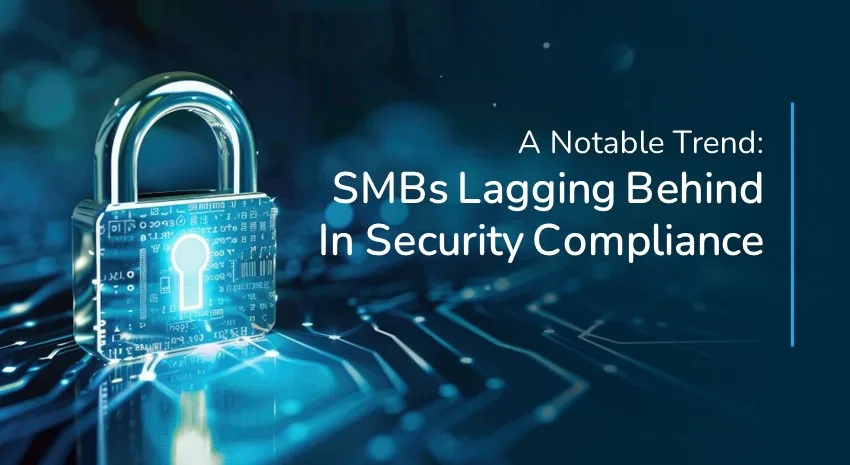SMBs Lag Behind in Security Compliance

In recent years, ransomware attacks have surged, coinciding with a notable trend of compliance challenges among organizations.
A survey conducted by the Ponemon Institute found that 51% of small businesses in the United States experienced a cyberattack in the past year, and only 28% reported having a security strategy in place. These numbers suggest that many small to midsize businesses (SMBs) are not fully compliant with cybersecurity best practices, which are crucial for protecting against cyber threats. It also highlights the importance of improving awareness, education, and resources to help SMBs meet compliance requirements and enhance their cybersecurity posture.
Several common factors seem to contribute to this correlation:
- Lack of security investment: Some organizations, especially smaller businesses, might prioritize cost savings over robust cybersecurity measures, leading to inadequate investments in security technologies and practices, making them more vulnerable to ransomware attacks.
- The complexity of compliance: Compliance with regulations and standards such as GDPR, SOX, HIPAA, or PCI DSS can be complex and resource-intensive. Many organizations struggle to fully understand and implement the requirements, exposing them to cyber threats, including ransomware.
- Limited resources: Small to midsize businesses often have limited resources, including budget and staff, to dedicate to cybersecurity. This resource shortage can result in gaps in their security posture, making them attractive targets for ransomware attackers.
- Remote work challenges: The shift to remote work due to the COVID-19 pandemic has introduced new challenges for cybersecurity and compliance. Many organizations have had to quickly adapt their security measures, potentially leaving them more vulnerable to ransomware attacks.
- Increased sophistication of attacks: Ransomware attacks have become more sophisticated, with attackers using advanced techniques to bypass security measures, including phishing, exploiting unpatched vulnerabilities, AI-generated deep fakes, and leveraging insider threats.
To address the surge in ransomware attacks amid compliance challenges, organizations should:
- Prioritize cybersecurity investments, including technologies such as endpoint detection and response (EDR), intrusion detection systems (IDS), and security information and event management (SIEM) solutions.
- Enhance employee training and awareness programs to recognize and respond to phishing attacks and other social engineering tactics.
- Conduct regular security assessments and audits to identify and address vulnerabilities.
- Implement robust backup and disaster recovery plans to mitigate the impact of ransomware attacks.
- Consider outsourcing security functions to third-party providers with expertise in cybersecurity and compliance.
By addressing these challenges and improving their security posture, organizations can better defend against ransomware attacks and protect their data and systems from compromise.
To learn more about improving your cybersecurity posture, read our free eBook, Cybersecurity Threats & Countermeasures: Protecting Your Company from External and Internal Threats.
Contact ArcherPoint and ask about our Managed IT services, which include backup and disaster recovery for both on-premises and cloud deployments, endpoint and infrastructure security management, cyber insurance qualification assistance, and cloud security assessments.

